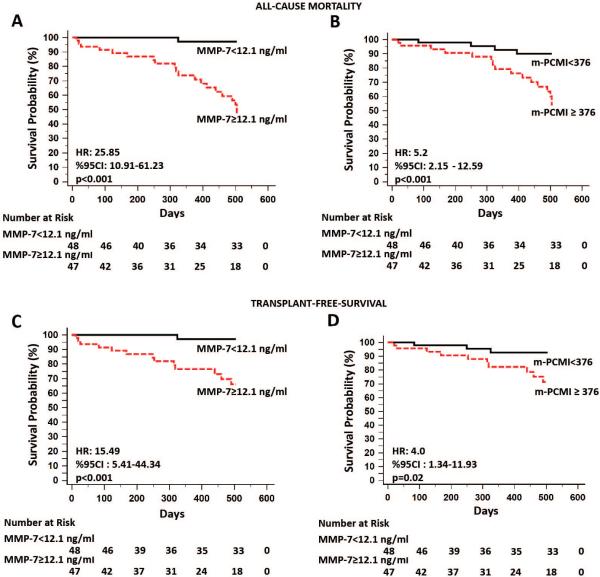Figure 2. Increased plasma MMP-7 concentrations and personal clinical and molecular mortality index (PCMI) are highly predictive of all-cause-mortality and transplant-free-survival in patients with IPF.
(A, C) The cut-off threshold of 12.1 ng/ml of plasma MMP-7 was used as a dichotomous variable and clearly differentiated high from low risk mortality groups as assessed by significant associations with both all-cause-mortality and transplant-free-survival. The red curves indicate the Kaplan-Meier plot for all-cause-mortality or transplant-free survival by samples with MMP-7 concentrations in the highest MMP7 quantile (≥12.1 ng/ml). The black curves indicate the same plot for the lowest quantile (<12.1 ng/ml). Risk tables below indicate the number of objects at risk for each group at each time point. (B, D) The same cut-off point of 12.1 ng/ml was incorporated into a multidimensional prediction rule, denominated modified (m)-PCMI. m-PCMI concentrations split by the median (376) showed strong correlations with both all-cause-mortality and transplant-free-survival. The red curves indicate the Kaplan-Meier plot for all-cause-mortality or transplant-free survival by samples with m-PCMI concentrations in the highest m-PCMI quantile (≥ 376). The black curves indicate the same plot for the highest quantile (<376). Risk tables below indicate the number of objects at risk for each group at each time point.

